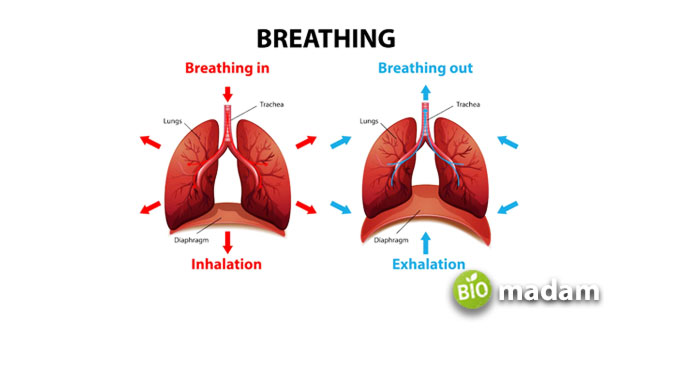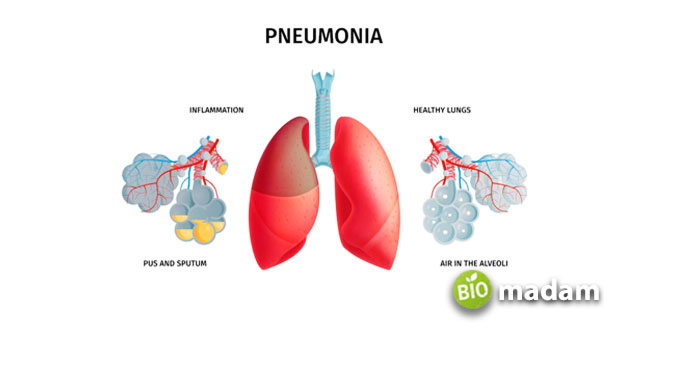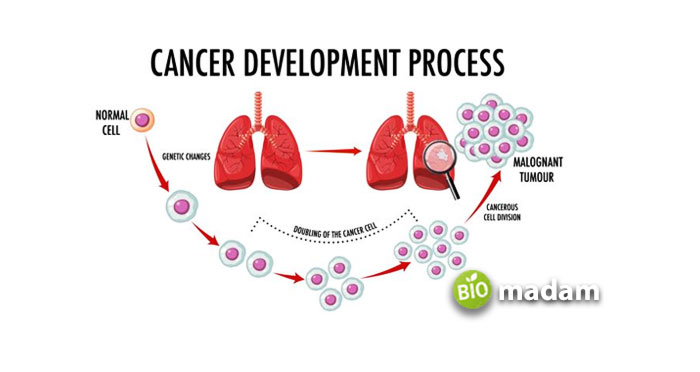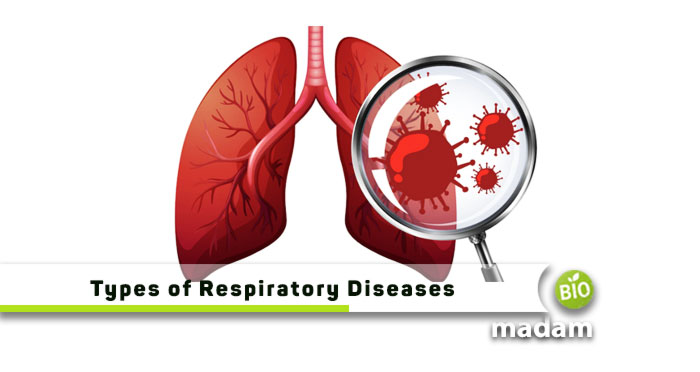Just as plants have mechanisms like photosynthesis and cellular respiration, animals have them too. There are different states of respiration in humans that ultimately refer to the process of inhaling oxygen and exhaling carbon dioxide. The respiratory system is a critical part of the human anatomy and physiology as it allows the intake and outlet of air from the body. The lungs absorb the oxygen that reaches all organs in the body through blood.
Sometimes, the respiratory system may not be able to function properly due to antigens leading to infections and diseases within the body. In such a situation, you might face breathing problems and difficulty in respiration.
How Does the Respiratory System Work?
Before we tell you about the different types of respiratory diseases in the body, let’s have a quick look at how the respiratory system works. It will enable you to understand the conditions better and their impact on the respiratory system.
The respiratory system is responsible for intaking oxygen, which is supplied to all organs in the body for proper functioning. The respiratory system comprises your mouth, nose, throat, airway, lungs, and voice box. The air enters your respiratory system through your mouth or nose. The cilia in the nose filter out dust particles and most antigens to propel clean air further. The process continues in the larynx, pharynx, trachea, and bronchi through mucus. The air reaches the alveoli that facilitate the exchange of gasses.

The alveoli fill with air when you breathe, and oxygen diffuses from the alveoli to the blood through the capillaries. Hemoglobin picks the oxygen into the blood and transports it to all cells and tissues that need oxygen-rich blood. Ultimately, carbon dioxide leaves the cell and moves into the capillaries. The blood moves from the heart to the lungs, and the carbon dioxide enters the alveoli to be exhaled.
Here are the common respiratory diseases that may hinder normal breathing.
Common Respiratory Diseases
Asthma
Asthma and bronchitis are the most commonly known respiratory diseases. Severe breathing difficulties are a common sign of asthma. It results from inflammation in the airways that causes the airway to narrow down and makes breathing harder. Asthma arises from inflammation in the bronchial tubes with increased mucus.
Asthma Symptoms
The most prevalent symptom in asthma patients is loss of breath or difficulty breathing. Sometimes the situation may aggravate, and a person can have an asthma attack. One person with asthma may have different signs and symptoms than the other. Some asthma patients may experience long periods without any symptoms.
Symptoms of asthma include:
- Shortness of breath
- Pressure or tightness in the chest area
- Coughing
- Wheezing
The three major asthma signs are airway blockage, inflammation, and irritability. While you may not understand why you feel tightness or wheezing, these three are the underlying reasons.
- Inflammation: Asthma causes the bronchial tubes in your lungs to swell. This leads to lung damage and is one of the most important factors when treating asthma.
- Airway Blockage: The swelling and excessive mucus make it difficult for the air to pass through due to the tightening of muscles.
- Airway Irritability: People with asthma have more sensitive airways that overreact to exposure to antigens and pathogens.
The symptoms of an asthma attack are similar to the persisting symptoms of asthma combined with a few more like:
- Prolonged coughing
- Rapid breathing
- Wheezing
- Difficulty in talking
- Retractions in muscles and chest
- Sweaty face
- Anxiety and panic
Asthma Causes and Risk Factors
Asthma may be caused and triggered by the following:
- Air pollution
- Cold and flu
- Allergens
- Strong odors and other irritants
- Smoking
- GERD
- Humidity
- Aspirin
- Anxiety, stress, sadness, or even laughter
Asthma Treatment
Adequate asthma treatment can help ease your symptoms and let you breathe better. Moreover, there are several breathing exercises that you can follow under the supervision of a respiratory therapist and ease the asthma symptoms. While, below are some of the prescribed treatments for asthma include:
- Inhaled corticosteroids to prevent inflammation in airways
- Long-acting beta-antagonists or bronchodilators relax the muscles in your airway
- Combination inhalers containing bronchodilators and corticosteroids
- Short-acting beta antagonists ease symptoms by loosening muscles in the air passage
- Anticholinergics prevent the tightening of muscles around the airway
- Theophylline opens the airway and loosens chest tightness
- Leukotriene modifiers block asthma triggers to provide long-term relief
- Oral and IV corticosteroids rescue you during an asthma attack by easing inflammation in the airway
COPD
COPD refers to a type of respiratory disease combination ‘Chronic Obstructive Pulmonary Disease’, a group of diseases leading to respiratory difficulties and blockage in airflow. COPD is similar to asthma in presentation, but they vary in causative factors and severity. Smoking is the main trigger for COPD, while asthma typically arises from allergen exposure. A person with one condition is less likely to develop the other.
COPD combines two respiratory diseases: chronic bronchitis and emphysema, which we will discuss individually later. COPD does not typically have a treatment, but these conditions can be managed through an adequate regimen.

The symptoms of COPD include:
- Persistent wheezing
- Long-term cough with mucus
- Breathlessness
- Frequent chest infections
COPD Causes and Risk Factors
Some of the most common causes of COPD are:
- Tobacco smoking
- Respiratory infections
- Exposure to air pollutants
- Genetic factors
- Age over 65
- Women are more likely to develop COPD than men
COPD Treatment
COPD treatment involves a medicinal regimen followed by preventive measures. Some of the possible ways to treat and manage COPD include:
- Anti-inflammatory medications like steroids to manage inflammation in the lungs
- Bronchodilators relax airways and improve breathing
- Antibiotics for treating recurrent respiratory infections
- Anticholinergics help relax muscles around the airway and clear mucus
- Expectorants make the mucus thin to expel it easily
- Leukotriene modifiers to block leukotrienes that lead to bronchoconstriction
- Antihistamines relieve symptoms caused by allergens, including sneezing and watery eyes
- Antivirals help prevent serious symptoms as a result of viral diseases like flu and cold
- Supplemental oxygen is required in case of hypoxemia
- Avoid tobacco smoke to prevent the entry of irritants into the airway
- Pulmonary rehabilitation for COPD management and better life quality
Chronic Bronchitis
The word bronchitis is a combination of “bronch” and “itis.” “Bronch” refers to the bronchi of the lungs, while “–itis” represents inflammation. Thus, chronic bronchitis is the severe inflammation of the bronchi in the right and left lungs.
Bronchitis presents by a consistent cough for at least 3 months a year for 2 years in a row. It might seem like the cough keeps coming back. It is one of the types of COPD, and thus difficult to treat.
Chronic Bronchitis Symptoms
Prolonged cough over months is the main symptom of chronic bronchitis combined with others like
- Wheezing
- Shortness of breath
- Tight chest
- Feeling tired
The symptoms often worsen in winter due to decreased temperature and humidity.
Chronic Bronchitis Causes and Risk Factors
As mentioned in COPD, chronic bronchitis is more common in smokers and passive smokers that results in damaging the lungs. Dust is also a critical factor in aggravating the condition. Here are other causes and risk factors regarding chronic bronchitis.
- Air pollution
- Fire smoke
- Fumes from certain chemicals and products
- Ages 44 – 65
- More common in women than men
Chronic Bronchitis Treatment
Chronic bronchitis may not be completely cured by lifestyle modifications and medication can help relieve the symptoms. The most common treatment options suggested by doctors include:
- Anti-inflammatory drugs to relieve inflammation in your airway
- Bronchodilators for relaxing the bronchi and making breathing easier
- Oxygen therapy may be required in some severe cases with deficient oxygen
- Rehabilitation programs may help manage your disease through therapy
- Avoiding active and passive smoking, and by cleaning a smoker’s lungs.
- Stay away from strong fumes like house paint, cosmetic sprays, and varnish
- Exercise to help strengthen your lung muscles for improved breathing
- Breathing exercises like pursed lip breathing can help open up your airway
Emphysema
Emphysema is another Chronic Obstructive Pulmonary Disease that damages your lungs and makes it hard for you to breathe. Emphysema arises from damage to the alveolar walls in your lungs due to an obstruction. This obstruction causes air to get trapped in your lungs, and your chest appears fuller and obtains a filled appearance. Emphysema causes harm to your alveoli, and you develop a huge air pocket in the lungs. It shrinks the lungs’ surface area, and you cannot inhale and exhale easily.
Emphysema moves in four stages, from Stage 1 being the mildest to stay 4 being the most severe. Patients with stage 4 emphysema exhibit only 30% lung functioning compared to a healthy individual.
Emphysema Symptoms
The most prominent symptoms of emphysema are fatigue and shortness of breath that appear initially. A few other signs of emphysema are:
- Wheezing
- Tiredness in chest
- Ongoing fatigue
- Increased mucus production and abnormal color
- Trouble sleeping
- Not being able to get enough air
- Weight loss
- Anxiety and depression
Emphysema Causes and Risk Factors
Smoking is the fundamental cause of damage to the alveoli leading to emphysema. It is more common in people who have been smoking for years.
Other causes of emphysema include:
- Respiratory infections
- Polluted air
- Genetic factors like alpha-1 antitrypsin deficiency
Emphysema Treatment
- Bronchodilators are among the main treatments for emphysema, as they help the muscles in your airway relax
- Corticosteroids reduce mucus and swelling in the air passage. Oral corticosteroids help in flare periods
- Anti-inflammatory medicines help reduce inflammation
- Antibiotics keep the situation in control by treating bacterial infections
- Oxygen Therapy helps revive oxygen concentration in case of hypoxemia
- Quitting smoking is essential to prevent the worsening of the condition
- LRVS or lung volume reduction surgery is done to remove a part of the affected lung tissue and surgically join the healthy tissues together.
- BLVR, or bronchoscopic lung volume reduction surgery, involves placing a one-way valve into the air passage to prevent the entry of air into specific sections
- A lung transplant is the last option when it comes to emphysema treatment
Pneumonia
Pneumonia is an infection of the alveoli. The bacteria or viruses infect the lungs and lead to fluid accumulation. Bacterial pneumonia is usually more severe than viral pneumonia. Fluid accumulation in air sacs negatively impacts the ability of the alveoli to exchange gasses adequately. It makes breathing hard, and you may experience bloody or green mucus on coughing. Pneumonia may also arise from flu or pneumococcal disease. Pneumonia can be diagnosed as different types, but the prognosis is similar in all. The condition typically affects one lung, and pneumonia in both lungs is referred to as double pneumonia or bilateral pneumonia.
The symptoms of pneumonia in the case of bacteria or viral pneumonia vary slightly. It also makes it easy to distinguish one from the other. Let’s tell you the symptoms of both.

Bacterial Pneumonia Symptoms
The symptoms associated with bacterial pneumonia include:
- Cough with green, yellow, or bloody mucus
- High fever of up to 105 F
- Dyspnea and rapid breathing
- Fast breathing
- Chest pain while breathing
- Blue nails, skin, or lips
- Tiredness and fatigue
- Confusion
Viral Pneumonia Symptoms
The progression of viral pneumonia is slow, and you may experience the symptoms later compared to bacterial pneumonia.
- High fever
- Chills
- Headache
- Dry cough
- Tiredness and fatigue
- Muscle pain
Pneumonia Causes
Pneumonia is caused by bacteria or viruses you may acquire from different sources. Some of the possible causes of obtaining pneumonia include:
- Streptococcus pneumoniae following cold or flu
- Mycoplasma pneumoniae causes walking pneumonia
- Fungi from bird droppings and soil
- Viruses that cause flu and cold
- Bacteria and other parasites widely spread in hospitals
- Food, drink, vomit, or saliva aspiration
Pneumonia Treatment
The basic treatment of pneumonia depends on the causative agent, followed by further interventions if required.
- Antibiotics help treat bacterial pneumonia by restricting the bacteria’s activity. These can also cause constipation.
- Antivirals treat viral pneumonia as antibiotics cannot treat it
- Antifungals are prescribed to treat pneumonia rising from fungal infections
- IV fluids are given to prevent and treat dehydration during pneumonia
- Oxygen therapy provides support when the patient is not able to breathe properly
- Surgery may be needed to drain the fluid between the chest wall and lungs
Pulmonary Edema
Pulmonary edema, also known as lung congestion and lung water, is another type of respiratory disease that refers to fluid buildup in your lungs.
The fluid enters the air sacs in the lungs, making breathing harder. It may result from pneumonia and cardiac diseases. It could be acute or chronic. Acute pulmonary edema also needs immediate intervention.
Sometimes pulmonary edema may be confused with pleural effusion. Pulmonary edema involves the presence of fluid in the alveoli, while pleural effusion is the movement of water onto the lung surface.
Pulmonary Edema Symptoms
Symptoms of pulmonary edema include:
- Orthopnea (difficulty in breathing when lying down)
- Bloody cough
- Paroxysmal nocturnal dyspnea causes you to wake up at night
- Shortness of breath
- Difficulty in speaking
- Pale skin
- Excessive sweating
- Abdominal or leg swelling
- Decreased alertness
- Anxiety
Pulmonary Edema Causes
Congestive heart failure is one of the most common causes of pulmonary edema. Other causes of pulmonary edema may include:
- Pulmonary embolism and heart attack
- Narrowed heart valves
- Constricted arteries
- Severe hypertension
- High altitude
- Major injury
Pulmonary Edema Treatment
Most people get to know about pulmonary edema when the condition has quite worsened. The treatment includes
- Medicines like diuretics may help remove extra fluids from the body
- Vasodilators help dilate blood vessels to improve the flow of oxygen through blood
- Inotropes increase heart functioning to pump blood more forcefully to all tissues and organs in the body
- Calcium channel blockers help reduce high blood pressure
- Morphine reduces shortness of breath and anxiety; however, you must take it after professional advice
- Oxygen is given to the patient through the nose
- Ventilator is attached when the patient cannot breathe on their own
Tuberculosis
Tuberculosis is another pathology associated with the respiratory system and majorly affects the lungs. Tuberculosis spreads through respiratory droplets and is more common in underdeveloped countries. The bacteria attack the lung tissues of people with the weak immune system. Sometimes, the person with tuberculosis might not exhibit any symptoms and have an inactive form of the disease. This condition is known as latent tuberculosis.
Tuberculosis Symptoms
A persistent cough lasting over 3 weeks is the most prominent symptom of tuberculosis, followed by others like:
- Phlegm or blood with cough
- Swelling in the neck
- Chest pain when coughing
- High temperature
- Tiredness and fatigue
- Weight loss
- Loss of appetite
- Night sweats
Tuberculosis Causes
Tuberculosis is caused by the bacterium Mycobacterium tuberculosis.
Tuberculosis Treatment
Tuberculosis requires a proper treatment regimen comprising various drugs to improve the condition. They include:
- Rifampin
- Isoniazid
- Rifapentine
- Ethambutol
- Pyrazinamide
You must take the prescribed regimen for six to nine months, as suggested by the doctor. Not completing the course may lead to remission, and your TB may become resistant.
Lung Cancer
Lung cancer is one of the various types of cancer. It refers to the development of malignant or benign cancerous mass in the lungs. Carcinogens and smoking are one of the most critical causes of cancer. Cancer may begin in the lungs and gradually spread to lymph nodes and other body organs. They can be small-cell and non-small-cell cancers. Both types of cancers grow differently and have specific treatments.

Lung Cancer Symptoms
Lung cancer is often not diagnosed at early stages as it does not exhibit the symptoms early. The signs and symptoms of lung cancer in its advanced stage include:
- Long-lasting cough
- Shortness of breath
- Blood with cough
- Chest pain on coughing or otherwise
- Headache
- Pain in bones
- Sudden weight loss
Lung Cancer Causes
Lung cancer may result from various factors, including:
- Smoking
- Passive smoking
- Carcinogens
- Family history
- Radon gas exposure
Lung Cancer Treatment
Lung cancer can be treated by removing cancerous tissues from your lungs, followed by additional treatment and care.
- Surgery helps remove the cancerous mass from the lungs
- Radiation therapy uses high-energy radiation to kill cancer cells
- Chemotherapy assists lung cancer treatment by shrinking and killing the cancer cells
- Targeted therapy uses drugs that restrict the spread and growth of cancer
- Palliative care supports the treatment to minimize signs and symptoms
The Bottom Line
The respiratory system is essential to human life as it allows inhalation and exhalation, which are essential for oxygen intake. The oxygen reaches all tissues and organs to ensure proper functioning. However, the lungs may not work properly due to an underlying reason, such as an infection, smoking, or other factors. Emphysema, chronic bronchitis, asthma, COPD, pneumonia, and tuberculosis are some of the common diseases and conditions associated with the lungs. Their presentation may be similar, but it is important to notice changes in your normal body functioning and consult the doctor in case of any type of respiratory disease.

Anna has completed her degree in Pharmacy from the University of Hawaii. She is serving as a research assistant in a pharmaceutical company. She had a great interest in writing blogs, traveling to different parts of the US, and trying delicious recipes in her spare time.

